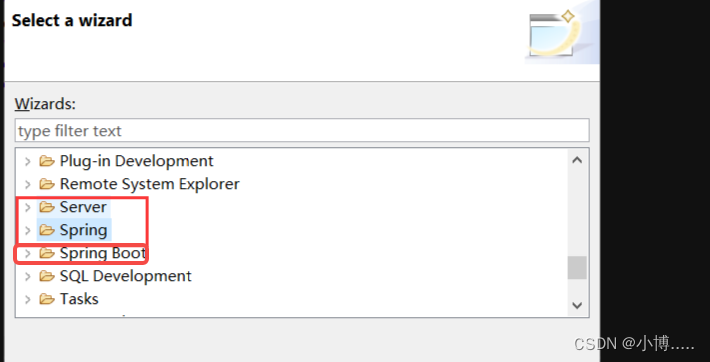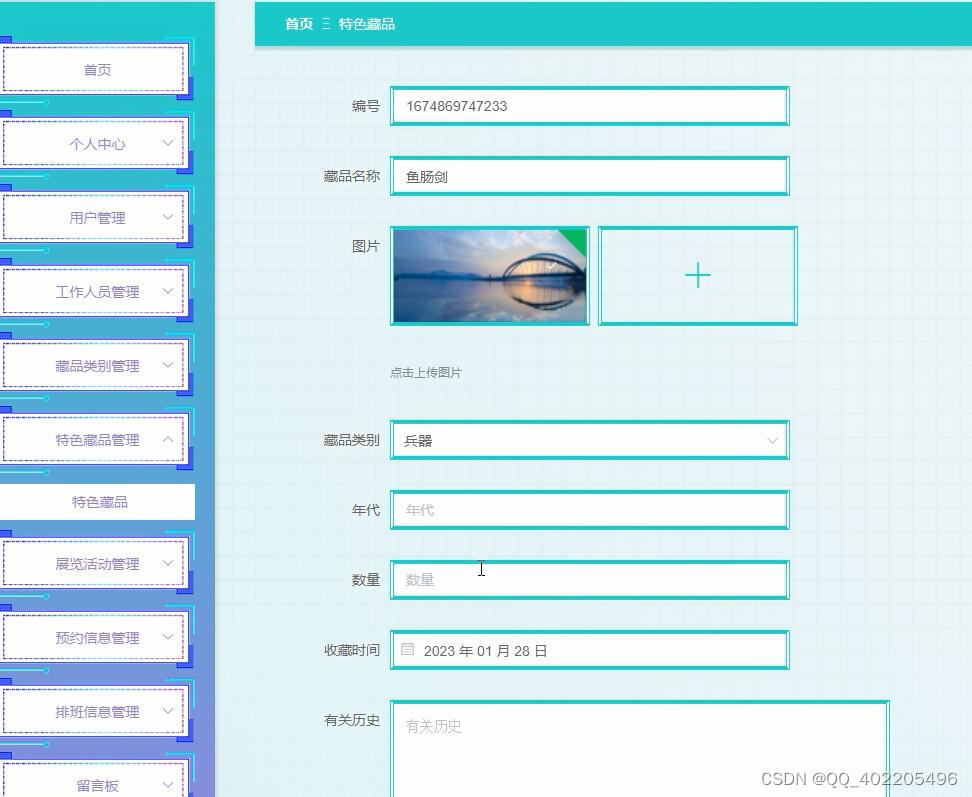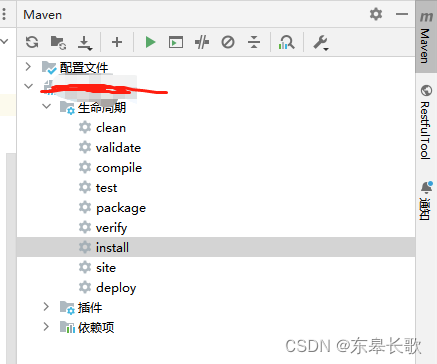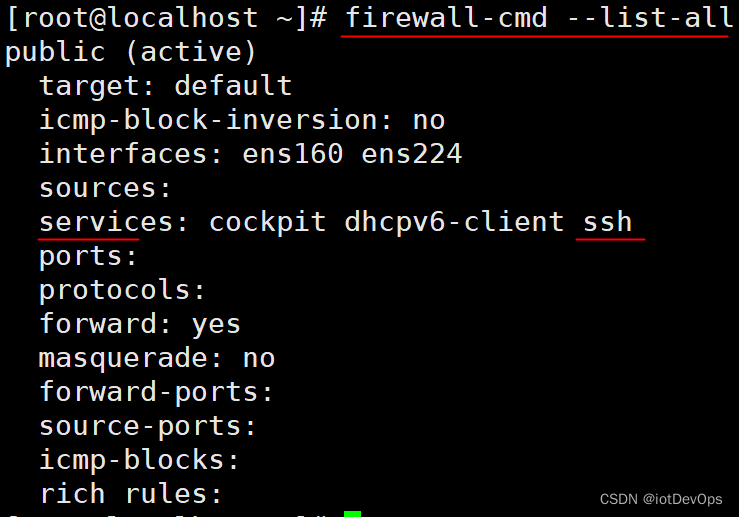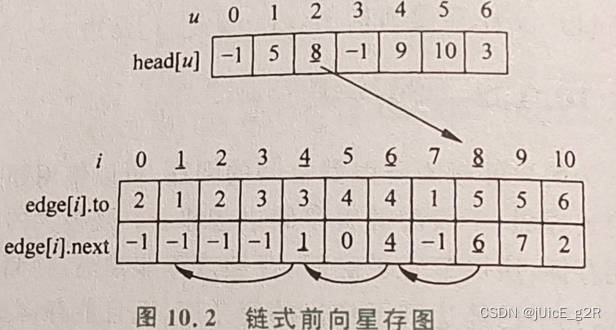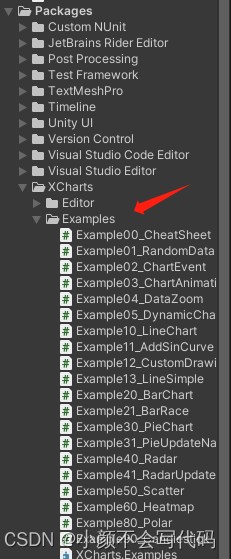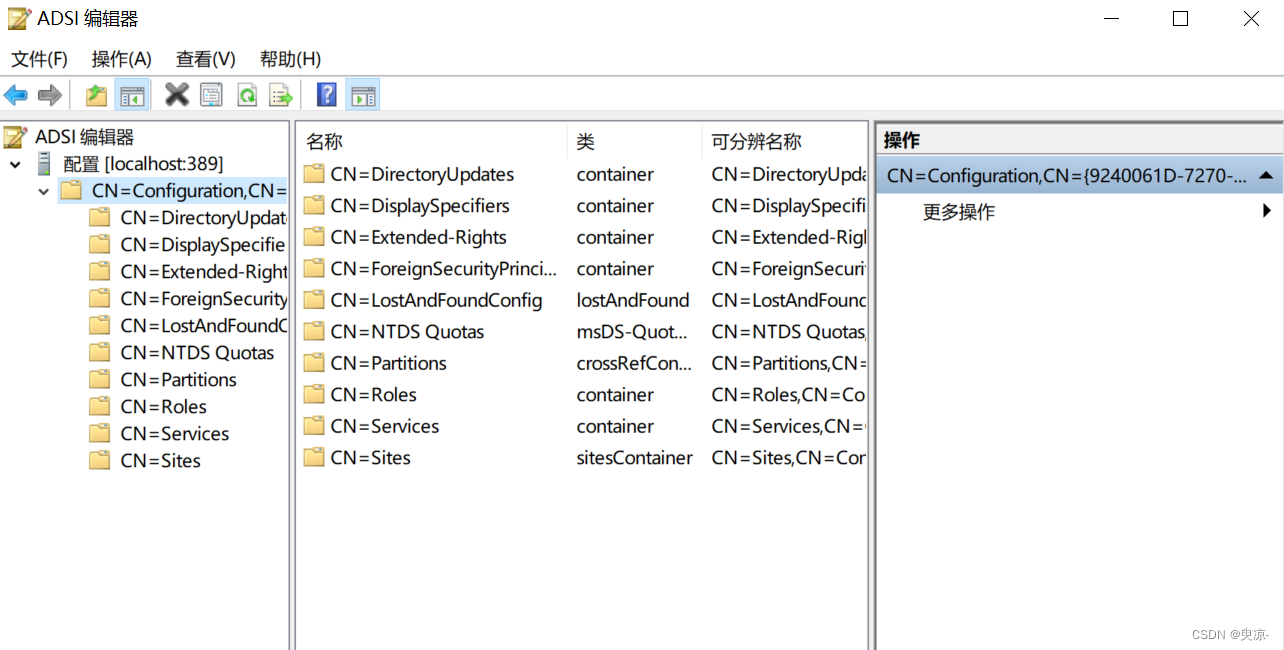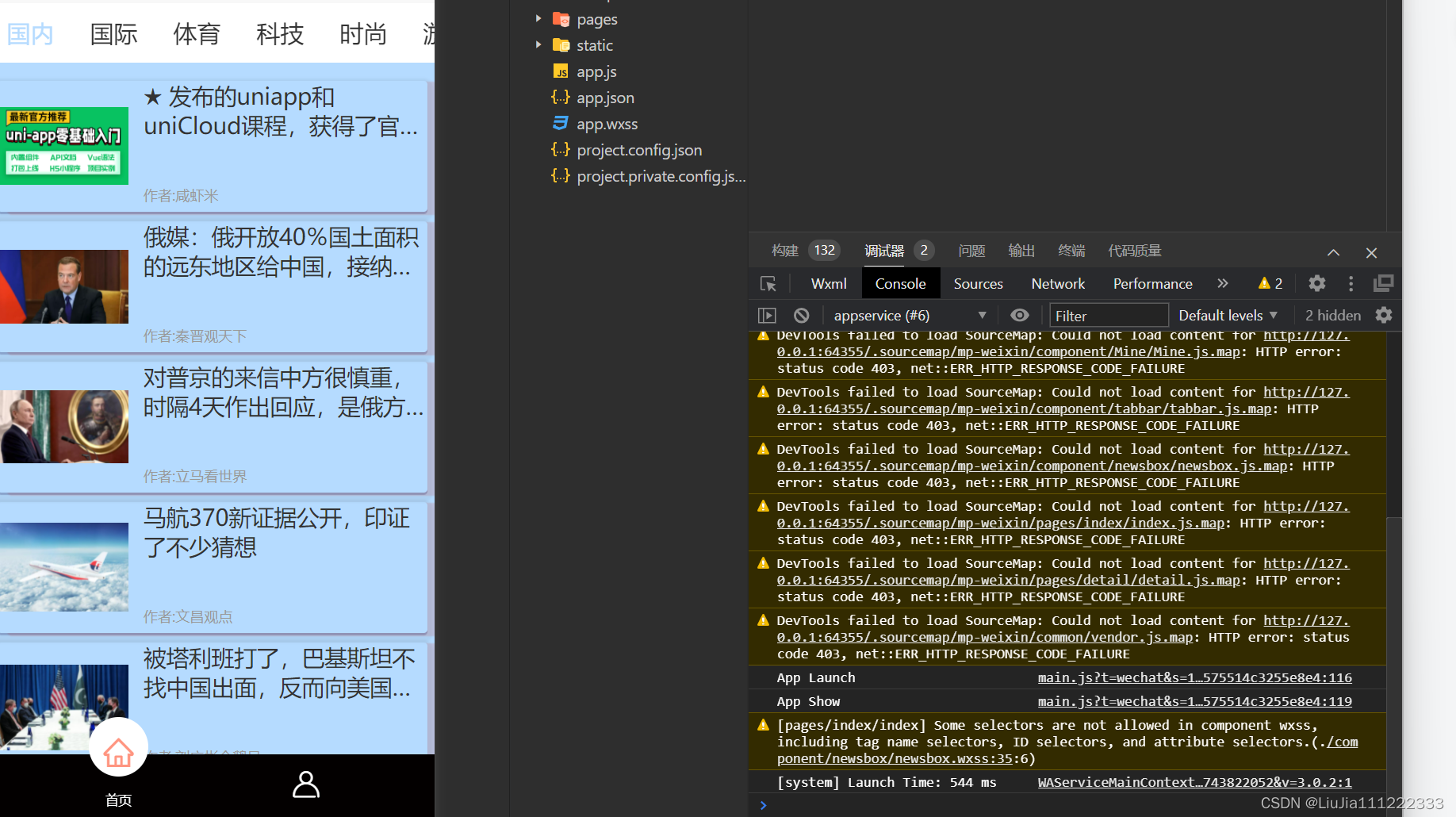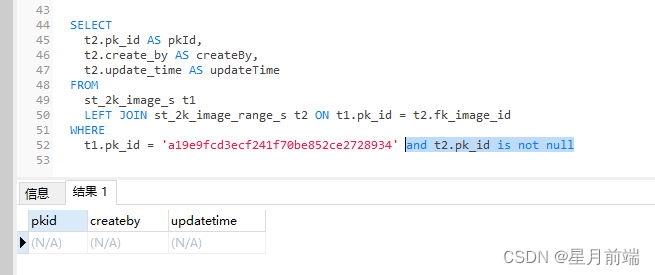目录
题目部分
解读与分析
代码实现
题目部分
| 题目 | 最小数量线段覆盖 |
| 难度 | 难 |
| 题目说明 | 给定坐标轴(一维坐标轴)上的一组线段,线段的起点和终点均为整数并且长度不小于1,请你从中找到最少数量的线段,这些线段可以覆盖住所有线段。 |
| 输入描述 | 第一行输入为所有线段的数量,不超过 10000,后面每行表示一条线段,格式为”x,y",x 和 y 分别表示起点和终点,取值范围是 [- |
| 输出描述 | 最少线段数量,为正整数。 |
| 补充说明 | 无 |
| ------------------------------------------------------ | |
| 示例 | |
| 示例1 | |
| 输入 | 3 1,4 2,5 3,6 |
| 输出 | 2 |
| 说明 | 选取 2 条线段 [ 1,4 ] 和 [ 3,6 ],这两条线段可以覆盖 [ 2,5 ]。 |
解读与分析
题目解读:
在一个一维坐标系中,有很多线段(通过起止点标识),在求出这些线段覆盖的范围之外,求这些线段中至少可以取几个就能覆盖这些范围。
分析与思路:
在解答此题之前,先澄清一下,这些线段覆盖的范围可能是间断的区间。如 3 条线段 [1,4]、[2,5]、[6,7] 覆盖的区间是 [1,5]、[6,7]。
解答此题分三步:排序、分段、回溯。
1. 排序。对所有的线段排序。排序规则为,先对线段的起点进行排序,从小到大;如果起点相等,则对终点排序,也是从小到大。
2. 分段。在前文提到,这些线段覆盖的范围可能是间断的区间。所谓分段,就是找出这些间断的区间。
逐一遍历线段,如果后一个线段的起点大于前一个线段的终点,那么后一个线段就与前一个线段在不同的区间;否则,后一个线段一定与迁移线段处于同一个区间中。
所有位于不同区间的线段绝不会相交,因此,不同分段区间的线段可以单独统计,最后把所有区间的线段之和相加即可。
3. 回溯。对每个单独的区间,使用回溯算法,通过穷举得出所有可能覆盖的情况,从所有的情况中找出所需线段最小的情况。回溯可以使用递归实现,容易理解。
此题时间复杂度为 O(),空间复杂度为 O(n)。
代码实现
Java代码
import java.util.ArrayList;
import java.util.Comparator;
import java.util.List;
import java.util.Scanner;
/**
* 最少线段覆盖
*
* @since 2023.09.23
* @version 0.1
* @author Frank
*
*/
public class MinLineCount {
public static void main(String[] args) {
Scanner sc = new Scanner(System.in);
while (sc.hasNext()) {
String input = sc.nextLine();
int count = Integer.parseInt(input);
List<int[]> lines = new ArrayList<>();
for (int i = 0; i < count; i++) {
input = sc.nextLine();
String[] strStartEnd = input.split(",");
int[] startEnd = new int[2];
startEnd[0] = Integer.parseInt(strStartEnd[0]);
startEnd[1] = Integer.parseInt(strStartEnd[1]);
lines.add(startEnd);
}
processMinLineCount( lines);
}
}
private static void processMinLineCount( List<int[]> lines) {
// 1. 排序
Comparator<int[]> cmp = new Comparator<int[]>() {
@Override
public int compare(int[] o1, int[] o2) {
for (int i = 0; i < o1.length; i++) {
if (o1[i] != o2[i]) {
return o1[i] - o2[i];
}
}
return 0;
}
};
lines.sort(cmp);
// 2. 分段
class LinePart {
int start; // 起始点,包含在内
int end; // 终止点,包含在内
int startIdx; // 对应lines中的起始下标,包含在内
int endIdx; // 对应lines中的终止下标,包含在内
}
List<LinePart> lpList = new ArrayList<LinePart>();
LinePart tmpLP = new LinePart();
for (int i = 0; i < lines.size(); i++) {
int[] tmpLine = lines.get(i);
if (i == 0) {
tmpLP.start = tmpLine[0];
tmpLP.end = tmpLine[1];
tmpLP.startIdx = 0;
tmpLP.endIdx = 0;
lpList.add( tmpLP );
continue;
}
// 不是同一个区间
if( tmpLine[0] > tmpLP.end )
{
tmpLP = new LinePart();
tmpLP.start = tmpLine[0];
tmpLP.end = tmpLine[1];
tmpLP.startIdx = i;
tmpLP.endIdx = i;
lpList.add( tmpLP );
continue;
}else // 同一个区间
{
tmpLP.end = tmpLine[1];
tmpLP.endIdx = i;
}
}
//3.逐段求和
int count = 0;
for( int i = 0; i < lpList.size(); i ++ )
{
LinePart lpPart = lpList.get( i );
List<int[]> tmpList = new ArrayList<int[]>();
for( int j = lpPart.startIdx; j <= lpPart.endIdx; j ++ ) // j <= lpPart.endIdx,包含在内
{
int[] tmpLine = lines.get( j );
int[] copy = new int[2];
copy[0] = tmpLine[0];
copy[1] = tmpLine[1];
tmpList.add( copy );
}
int partCount = getPartMinCount( tmpLP.start, tmpLP.end, tmpList );
count += partCount;
}
System.out.println( count );
}
private static int getPartMinCount( int start, int end, List<int[]> list)
{
if( start >= end )
{
return 0;
}
int minCount = list.size();
for( int i = 0; i < list.size(); i ++ )
{
int tmpCount = 0;
int[] cur = list.get( i );
// 当它已经无法覆盖
if( cur[0] > start )
{
break;
}
// 如果end小于start,那这样的线段根本不需要
if( cur[1] < start )
{
continue;
}
list.remove( i );
tmpCount ++;
tmpCount += getPartMinCount( cur[1], end, list);
list.add( i, cur );
if( tmpCount < minCount )
{
minCount = tmpCount;
}
}
return minCount;
}
}JavaScript代码
const rl = require("readline").createInterface({ input: process.stdin });
var iter = rl[Symbol.asyncIterator]();
const readline = async () => (await iter.next()).value;
void async function() {
while (line = await readline()) {
var count = parseInt(line);
var lines = new Array();
for (var i = 0; i < count; i++) {
line = await readline();
var strStartEnd = line.split(",");
var startEnd = [];
startEnd[0] = parseInt(strStartEnd[0]);
startEnd[1] = parseInt(strStartEnd[1]);
lines[i] = startEnd;
}
processMinLineCount(lines);
}
}();
function compareLineFun(a, b) {
for (var i = 0; i < a.length; i++) {
if (a[i] != b[i]) {
return a[i] - b[i];
}
}
return 0;
}
function processMinLineCount(lines) {
// 1. 排序
lines.sort(compareLineFun);
// 2. 分段
// LinePart 的数据结构
// LinePart {
// start; // 起始点,包含在内
// end; // 终止点,包含在内
// startIdx; // 对应lines中的起始下标,包含在内
// endIdx; // 对应lines中的终止下标,包含在内
// }
var lpList = new Array();
var tmpLP = {};
for (var i = 0; i < lines.length; i++) {
var tmpLine = lines[i];
if (i == 0) {
tmpLP.start = tmpLine[0];
tmpLP.end = tmpLine[1];
tmpLP.startIdx = 0;
tmpLP.endIdx = 0;
lpList.push(tmpLP);
continue;
}
// 不是同一个区间
if (tmpLine[0] > tmpLP.end) {
tmpLP = new LinePart();
tmpLP.start = tmpLine[0];
tmpLP.end = tmpLine[1];
tmpLP.startIdx = i;
tmpLP.endIdx = i;
lpList.push(tmpLP);
continue;
} else // 同一个区间
{
tmpLP.end = tmpLine[1];
tmpLP.endIdx = i;
}
}
//3.逐段求和
var count = 0;
for (var i = 0; i < lpList.length; i++) {
var lpPart = lpList[i];
var tmpList = new Array();
for (var j = lpPart.startIdx; j <= lpPart.endIdx; j++) // j <= lpPart.endIdx,包含在内
{
var tmpLine = lines[j];
var copy = [];
copy[0] = tmpLine[0];
copy[1] = tmpLine[1];
tmpList.push(copy);
}
var partCount = getPartMinCount(tmpLP.start, tmpLP.end, tmpList);
count += partCount;
}
console.log(count);
}
function getPartMinCount(start, end, list) {
if (start >= end) {
return 0;
}
var minCount = list.length;
for (var i = 0; i < list.length; i++) {
var tmpCount = 0;
var cur = list[i];
// 当它已经无法覆盖
if (cur[0] > start) {
break;
}
// 如果end小于start,那这样的线段根本不需要
if (cur[1] < start) {
continue;
}
list.splice(i, 1);
tmpCount++;
tmpCount += getPartMinCount(cur[1], end, list);
list.splice(i, 0, cur);
if (tmpCount < minCount) {
minCount = tmpCount;
}
}
return minCount;
}此题难度有些大,从思考算法,到实现代码并通过测试,都有不少工作量。在华为 OD 考题中,属于难度较大的题。
(完)

